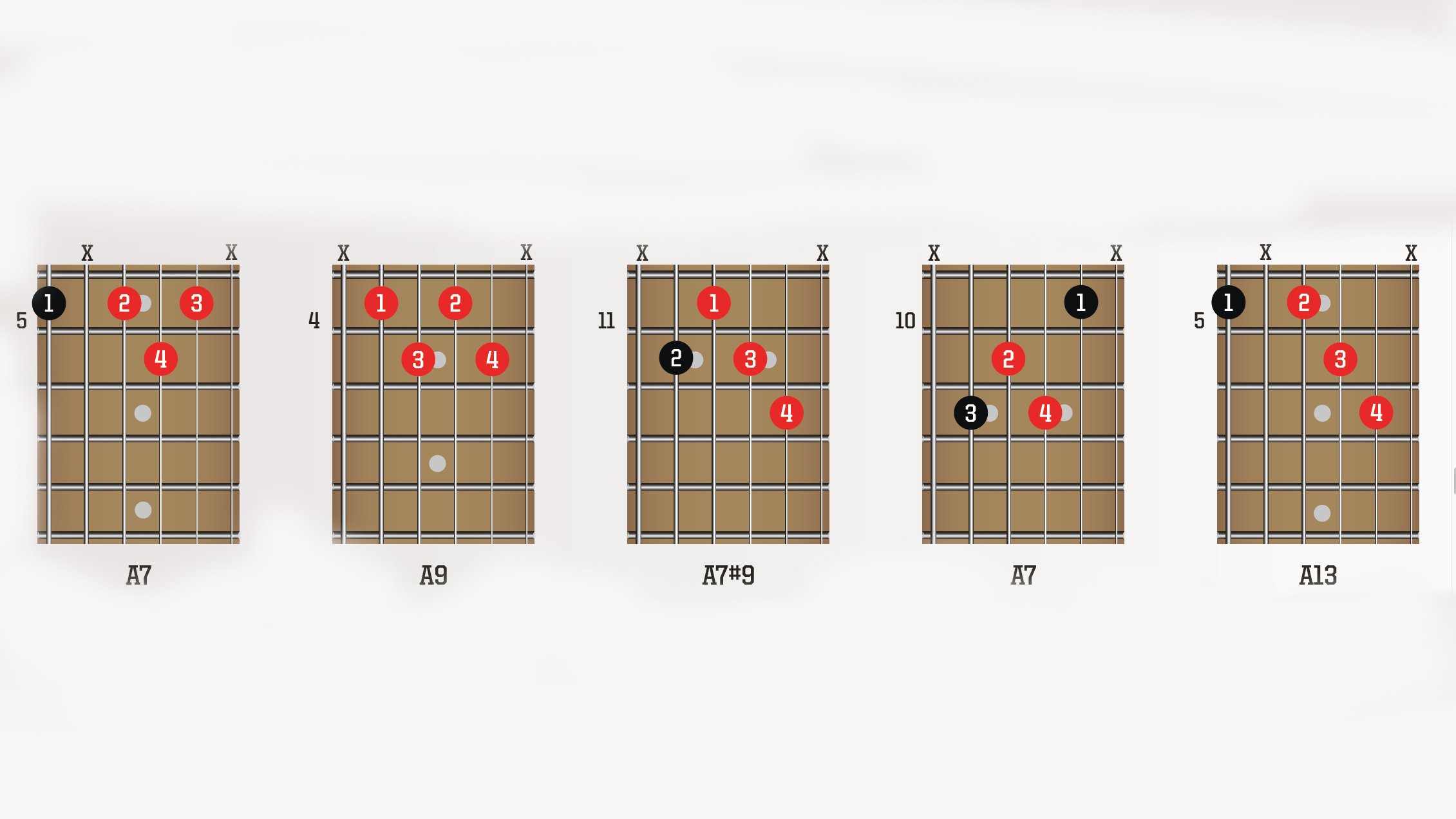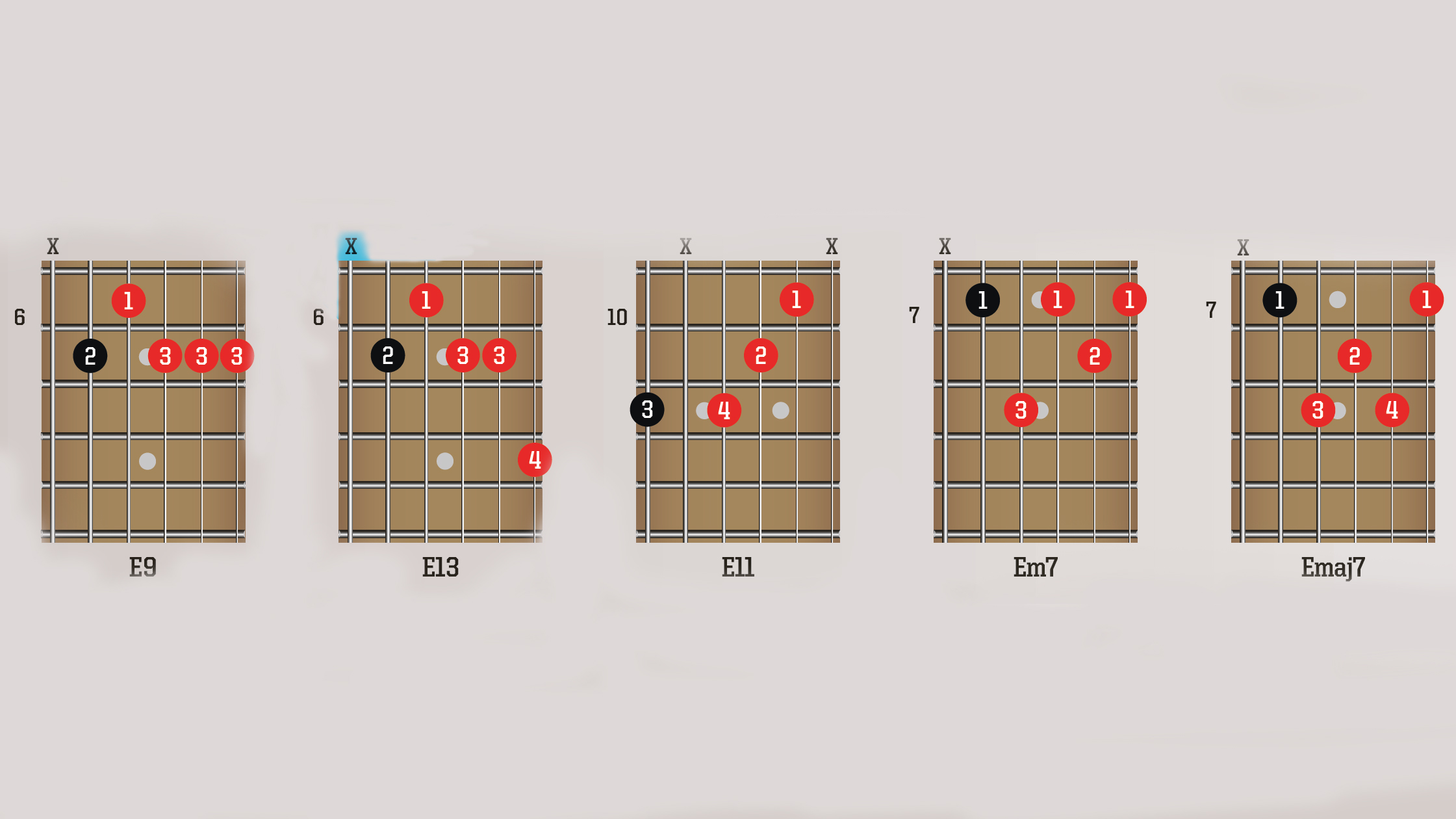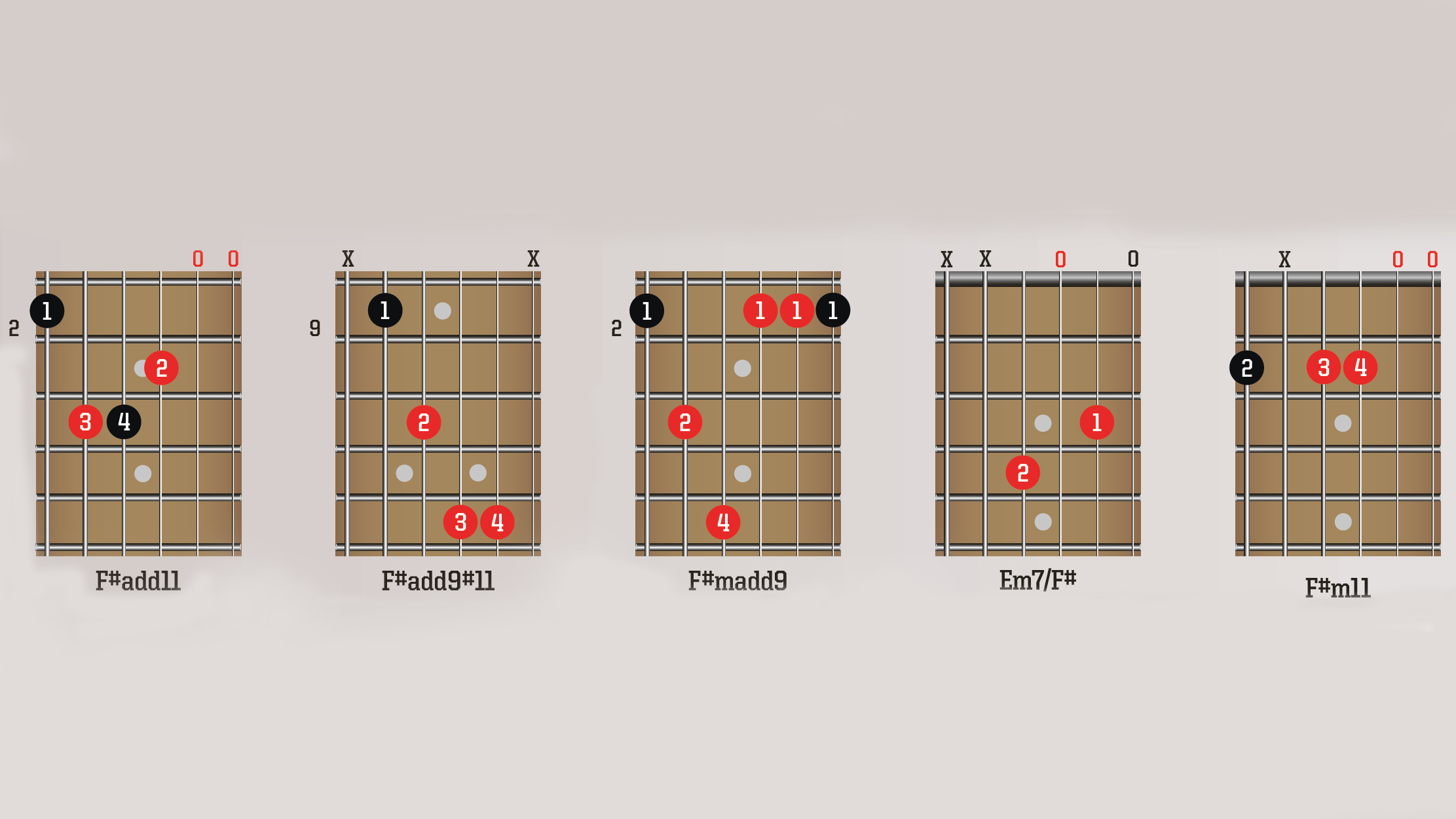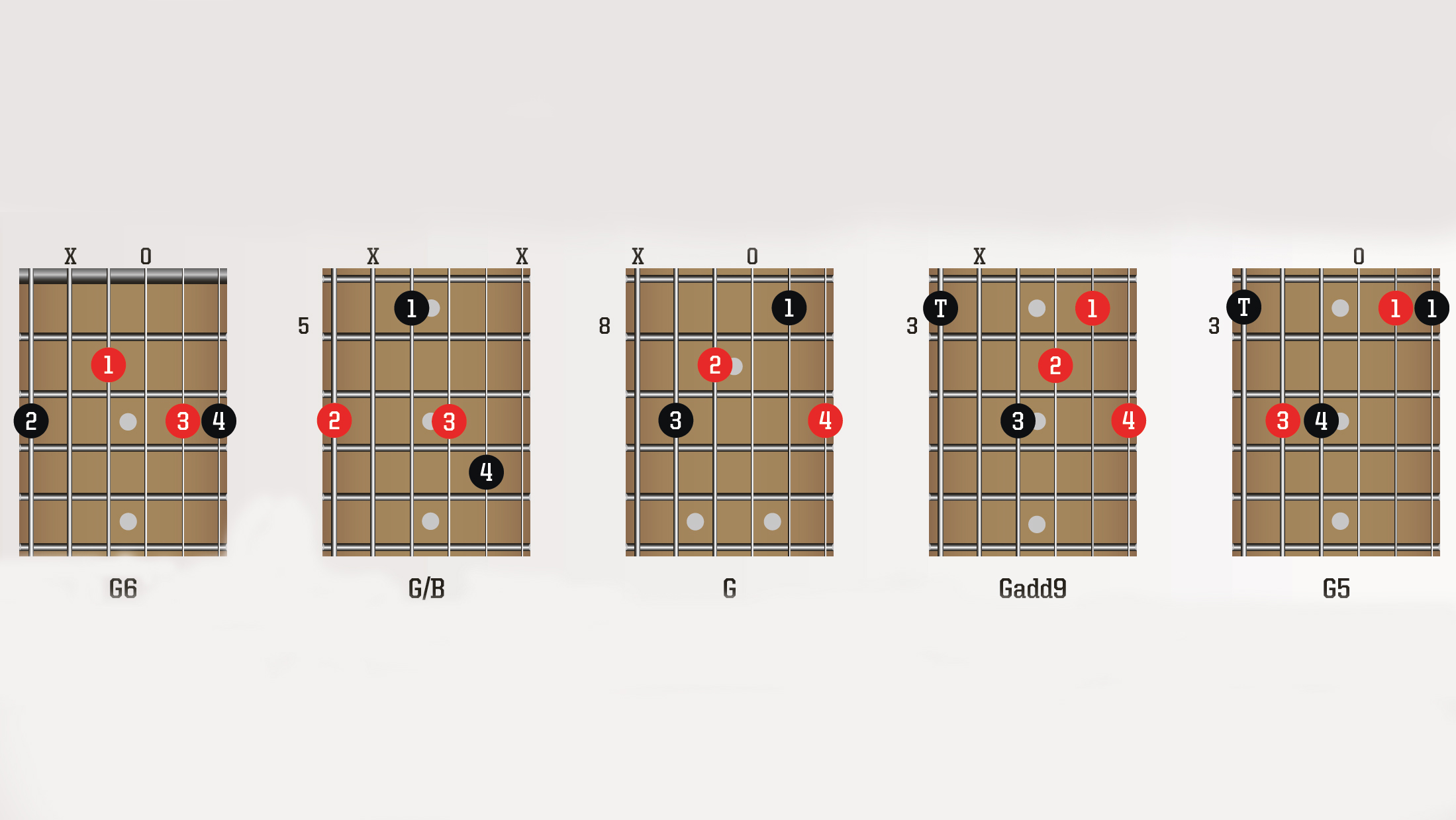
This lesson gives you the option to pick and choose from guitar chords that are associated with four different genres – but traditions are for breaking! Any of these could inspire you to go in a different direction.
Blues chords

All of these chords have a ‘dominant’ sound, which means they are somewhere in-between the ‘happy’ major tonality and the darker ‘minor’ mood.
The two different A7 and the A9 chords are chords for jamming for an entire verse or solo section. The A7#9 (or Hendrix chord) and A13 are more colourful and should be added sparingly to give it character.
Funk chords

The E9 and E13 chords are both typical funk chords, used extensively by James Brown’s guitarist Jimmy Nolen. You can switch between the chords by adding your fourth finger on the first string.
The E11 has more of a mellow, jazzy sound reminiscent of George Benson. The Em7 and EMaj7 shapes have a prettier flavour and are often utilised by Chic and Sister Sledge mastermind Nile Rodgers.
Prog rock chords

Three of the chords use open strings to add size and space to the chords. This is a trick often used by players like Alex Lifeson of Rush and John Petrucci of Dream Theater.
The F#add9#11 chord has a bright Lydian mode flavour and instantly brings Steve Vai or Joe Satriani to mind.
The Mikael Åkerfeldt-style F#m add9 is somber, but also very colourful – perfect for an Opeth song.
Folk chords

These chords are all major, which means that they have the root, 3rd and 5th intervals at their core. In a few cases we also add the 6th and 9th intervals for colour.
Since all of the chords in these examples are in the key of G we can also add the open third string to create wider intervals between notes.
The last two chords are played with your thumb over the top of the neck to play the root note, leaving your four fingers to create the chord shape. Listen to Every Kingdom by modern British folk artist Ben Howard for a taste of this approach.







